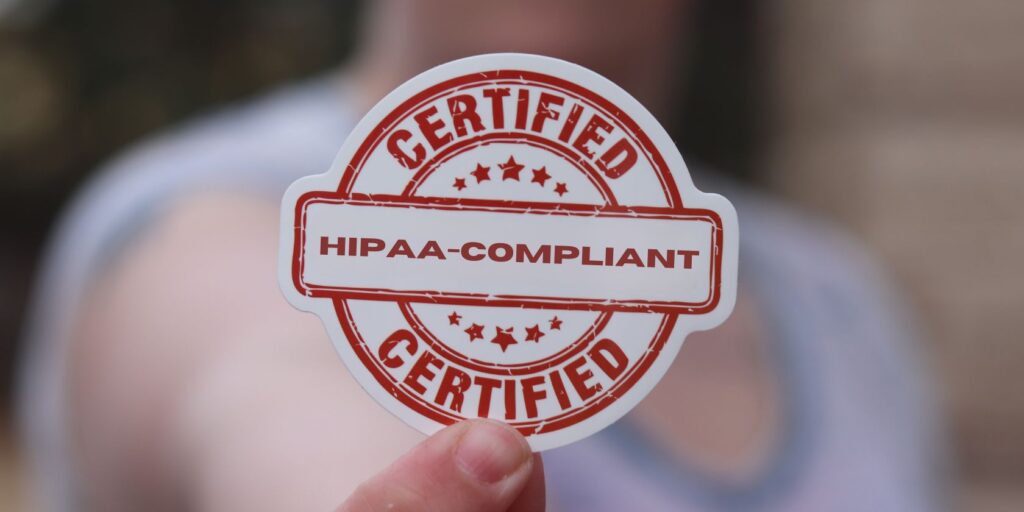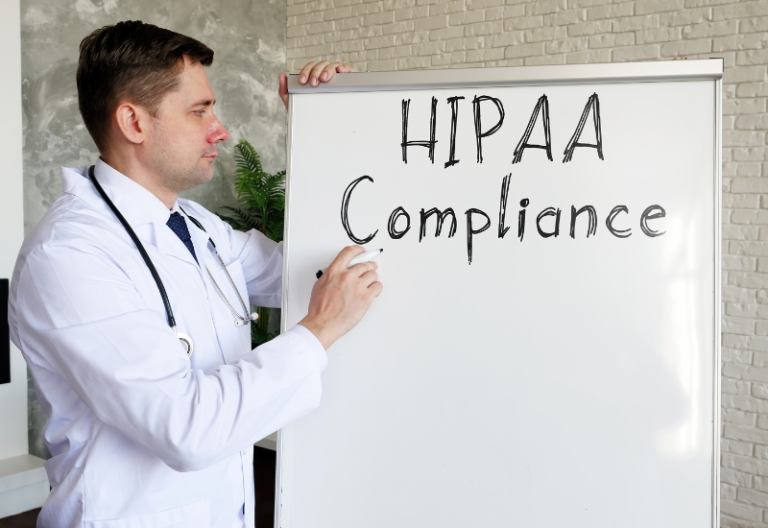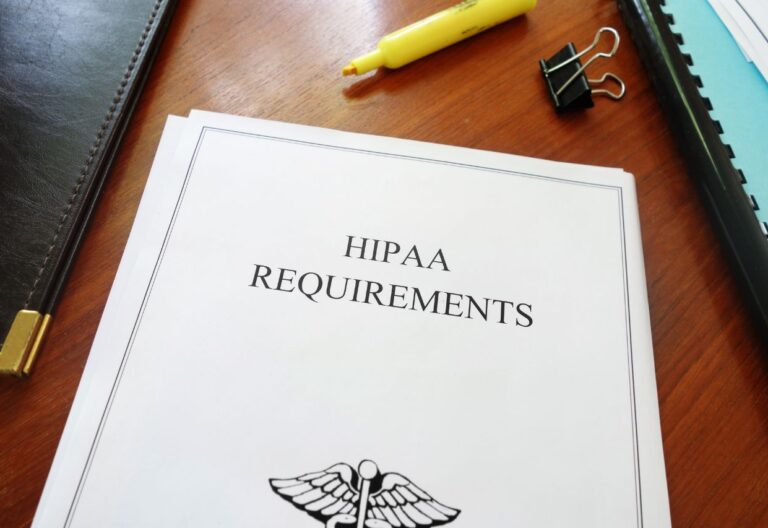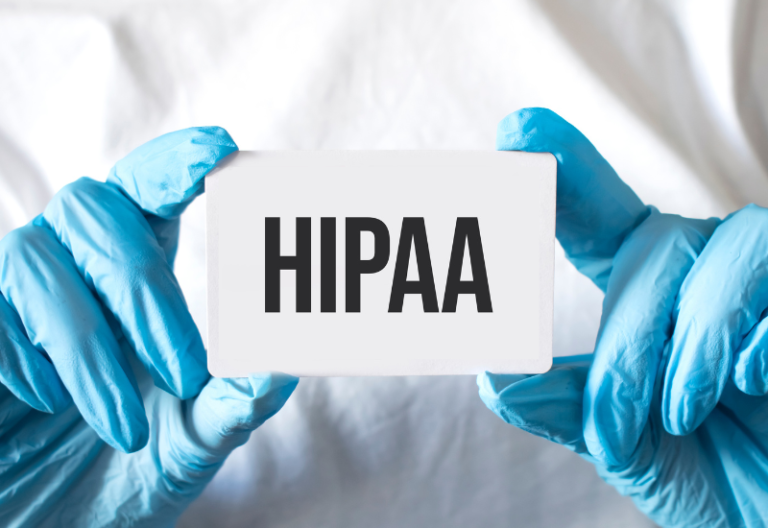The HIPAA Seal of Compliance holds immense significance in ensuring data privacy and security within the healthcare industry. Obtaining this seal demonstrates an organization’s commitment to adhering to the strict regulations outlined in the Health Insurance Portability and Accountability Act (HIPAA).
Discover the benefits of the HIPAA seal of compliance and how it instills trust and confidence among patients. Read on to learn why it is crucial for any healthcare entity looking to maintain credibility and ensure patient information security.
Table of Contents
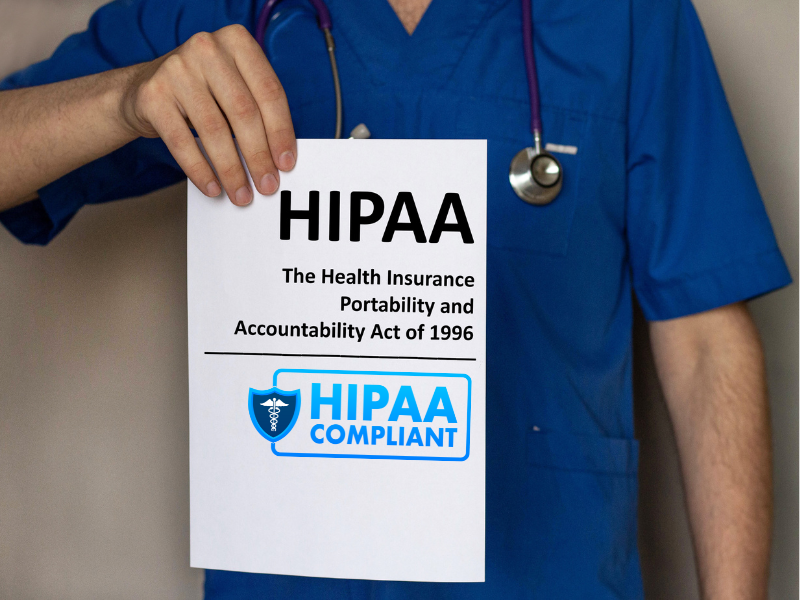
What Is a HIPAA Seal of Compliance?
The Compliancy Group bestows the Seal of Compliance upon covered entities who complete their HIPAA compliance program. This certification serves as a testament to the entity’s efforts in satisfying the federal HIPAA requirements and possessing the necessary documentation to show its dedication to security and privacy.
After undergoing an implementation Process, a designated Compliance Coach evaluates the compliance program. Once the program garners approval through this review, the entity becomes eligible for the HIPAA Seal of Compliance. This recognition comes in a digital format, ideal for display on websites and email signatures, and a tangible decal suitable for office spaces.
The HIPAA Seal of Compliance does more than verify an organization’s “good-faith effort.” It also sets it apart from others. Displaying the seal on a website or email signature shows patients and potential clients that the entity prioritizes safeguarding their protected health information (PHI).

Benefits of Achieving a HIPAA Seal of Compliance
Obtaining a HIPAA certification or Seal of Compliance offers numerous advantages. Let’s delve into these benefits in more detail:
- Being HIPAA certified indicates a commitment to safeguarding the confidentiality of PHI. This dedication to privacy protection can significantly boost your organization’s standing, giving you a competitive edge in the industry.
- The second advantage of having the Seal of Compliance is its ability to shield you from potential legal disputes and violation penalties. After all, the Compliancy Group only grants an entity a seal after meeting all the regulatory requirements and having the necessary documents to prove it.
- Achieving HIPAA certification sends a powerful message to patients. It demonstrates earnest concern for their privacy and establishes trust. Given that patients are increasingly mindful of their information’s security, your proactive steps to protect their data will undoubtedly earn their confidence and loyalty.
In summary, the importance of the HIPAA seal of compliance goes beyond professional reputation. It also safeguards your organization from legal troubles while reassuring patients that their privacy is paramount.
10 Common Compliance Misconceptions
Below are the common misconceptions about the HIPAA Seal of Compliance:
1. Misjudging government vigor in enforcement
While the government promotes the integration of HIPAA standards within healthcare practices, it has refrained from enforcing severe consequences and penalties for non-compliance. However, in the event of a data breach, the consequences can be significant, particularly when dealing with healthcare clients and healthcare organizations.
2. Misunderstanding of patient legal leverage
This power solely rests with the US Department of Health and Human Services (HHS). The intricate web of HIPAA doesn’t extend to empowering patients to litigate against physicians for perceived HIPAA violations.
3. Illusions of total restriction
Rather than extinguishing bad practices, HIPAA demands that healthcare providers institute practical privacy measures. Certain situations, such as HIV clinics, require heightened security, while more common contexts can still embrace a healthy blend of information sharing and data protection.
4. Consultant dependency fallacy
A commonly held belief erroneously suggests that compliance with HIPAA mandates a wallet-draining reliance on high-priced consultants. In truth, no federal entity sanctifies these consultants or their wares. HIPAA compliance doesn’t require attending specific seminars or purchasing proprietary systems.
5. Lack of available assistance
A prevailing misconception revolves around the lack of resources for grappling with HIPAA’s complexities. On the contrary, a wealth of materials for understanding HIPAA is readily accessible via the HHS and OCR websites.
6. Unfulfilled implementation beliefs
HIPAA harbors components that remain latent. Transaction and code set standards, the Employer Identifier Standard, and the National Provider Identifier are facets of HIPAA that are still in the process of maturation.
7. Misconstruing care impediments
Safeguarding protected health information is sometimes wrongly perceived as shackling medical care provision. Yet, HIPAA facilitates information sharing for patient care. It embraces a “minimum necessary” principle in areas like payment and research, exempting patient treatment discussions.
8. Failure to recognize physician gains
Contrarily, HIPAA’s transaction standards streamline medical claim submission and alleviate administrative burdens. The establishment of privacy protocols preemptively thwarts privacy-related claims.
9. Negating pre-existing privacy laws
HIPAA coexists with other laws that safeguard aspects like HIV, mental health, and minors’ records. Specific state laws maintain relevance, especially for paper-based medical information. The realm of medical privacy retains its complexities beyond HIPAA’s domain.
10. Isolating HIPAA from a legal context
HIPAA converges with federal acts such as ERISA, COBRA, and the Mental Health Parity Act. This shows effective collaboration around patient information protection.

7 Strategies for Maintaining Compliance After Obtaining the Seal
Maintaining HIPAA compliance after obtaining the seal involves implementing several key strategies:
1. Prioritize PHI safety
At the core of HIPAA is safeguarding PHI’s confidentiality, integrity, and accessibility. Sustaining HIPAA compliance mandates healthcare entities to institute administrative, technical, and physical safeguards, ensuring the protection of this sensitive data.
2. Cultivate a compliance-centric culture
Forging a culture of compliance extends beyond regulatory adherence. It entails nurturing an environment where employees grasp the significance of preserving patient privacy and proactively recognize and mitigate potential risks, which can be facilitated through compliance software for streamlined processes.
3. Remain informed and current
In an era of technological progress, HIPAA security protocols must evolve to counter emerging threats. Staying informed about these advancements is pivotal to upholding compliance and safeguarding patient confidentiality.
4. Prepare for more audits and probes
Entities subject to HIPAA and business associates should brace for audits and investigations. Ensuring complete HIPAA compliance within your organization helps to avoid costly fines and reputational damages.
5. Execute third-party risk appraisals
Healthcare establishments frequently collaborate with business associates wielding PHI access. To perpetuate HIPAA compliance, conduct recurring risk assessments on these external parties, ensuring their adherence to stipulated security standards.
6. Employ a secure data backup strategy
Data backups are a cornerstone of HIPAA compliance, ensuring PHI availability against accidental erasure, system breakdown, or cyber intrusions. A robust data backup strategy encompasses off-site or cloud-based storage, encryption, and periodic testing to validate backup integrity.
7. Formulate a clear data retention and disposal policy
HIPAA mandates specific records retention, typically spanning six years. Develop a data retention and disposal policy delineating the duration of PHI storage, secure storage methodologies, and proper data disposal protocols for obsolete data, both digital and physical.
Ultimately, obtaining the HIPAA Seal of Compliance is not the journey’s endpoint. Instead, it marks the beginning of an ongoing commitment to maintaining the highest standards of patient privacy and data protection.



